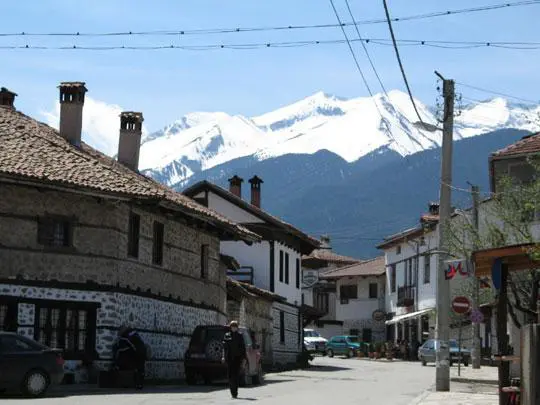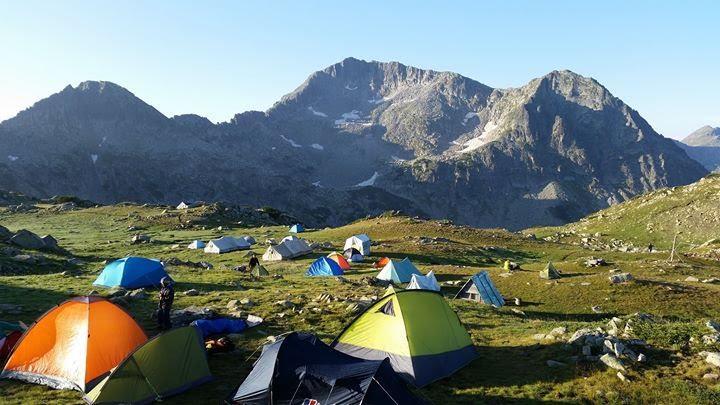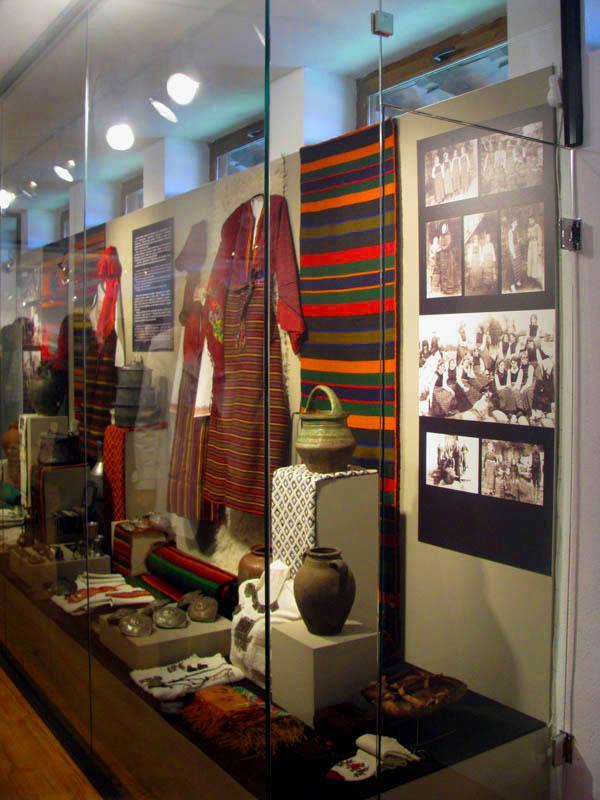Walking Tourism in Bansko and One-day Tours Around Town
Situated at the foot of the North Pirin, Bansko is the “front door” for walking tours and hiking throughout the mountain.
There are more than ten strategic points for walking tourism in Bansko and around the area, starting from different directions. The main marked routes around the Pirin Mountains and Pirin National Park are 12, with a total length of 200 kilometers.
Below, you can find multiple ways to explore the Bansko nature, culture, and beautiful views by planning different tours and day trips in the area.
Walking Tours in Bansko and Around: The Basics
The town of Bansko is connected with the Banderitsa chalets by a three and a half hour route and with Vihren and Demyanitsa, which are 4 hours away. From there, you can go in different directions across the mountain.
Many popular routes also begin from Dobrinishte and Razlog, which are 6 km away from Bansko.
For example, 3 hours away from Dobrinishte you can find the “Gotse Delchev” hut, where you can go to the “Bezbog” hut for 2 hours on foot or by taking the lift. From there, you can go along various marked routes. In addition, Razlog marks the beginning of the marvelous sightseeing tour for Yavorov hut, which takes about 4 to 5 hours.
Put shortly – tourists can make their distinct combinations of Bansko tours by switching from one route to another. So, with organized hiking in Bansko, one can pass the entire Pirin Mountain and reach the Rila and the Rhodope Mountains.
There are also summer and winter hiking trails in Bansko suitable for every group size and physical condition. You can choose difficulty and duration – there are hiking trails for more experienced mountaineers and trails perfect for every average mountain connoisseur.
Mountaineering and rock climbing can be practiced at 21 locations, with 45 routes in two alpine areas. Also, there are educational eco-paths where tourists can learn interesting facts about the mountain’s geology, the plant world, and the animal wildlife in Pirin.
The experience can be tailored to the needs of people with disabilities. For example, the “Dragostinov Chark” eco-trail is 4 km above Bansko and complies with all the requirements for access of tourists with specific needs.
This includes directions to the paths of rest, special flooring, fitted toilets, etc. When combined with the proper hotel type, indoor and outdoor Bansko fun is perfectly accessible to anyone.
Hiking in Bansko, or Picking Your Challenge
The multiple hikes in Bansko are of varying difficulty so that tourists can choose. Of course, we are talking about organized tourism and Bansko classes based on hiking and mountaineering.
At Lucky Bansko SPA & Relax hotel Bansko, transportation is provided to the departure point of the tour, and a qualified mountain guide will take care of you throughout the whole trip. In addition, a picnic is included in the picturesque scenery of the Pirin National Park.
All organized hiking in Bansko is planned among incredibly beautiful places where tourists can enjoy the views and relax. However, with the rise of the routes’ difficulty, both your endurance and fearlessness will be tested as sloping precipices and narrow paths are often among the Bansko sights in the higher parts of the mountain.
Walking to Okoto – the lowest of the 16 Banderishki Lakes – is among the most popular low-difficulty routes. The trail also includes Baikusheva Mura, which is more than 1300 years old. It’s an hour and a half or two in total.
Medium difficulty hikes include the crossings to Okoto, Ribno (Fish lake), and Muratovo from the Banderishka lakes, the Bezbog hut, and Popovo lake. These routes will take between 3 and 4 hours.
Tourists looking for a strong adrenaline lift can choose hikes in Bansko with the route to Vihren peak, Koncheto, Vasilashki lakes, or Damianitza hut, as the lakes go from Vihren hut or Bezbog hut.
When speaking of adrenaline, we can’t help but mention Koncheto once more. This is a steep saddle with a 400-meter-long edge, reaching some 50 centimeters in width and almost vertical 400-500-meter northeast slopes.
In 1963 a metal rope was constructed, and in 1969, a trail was drawn on the southwest slopes. They say that before the 1963s, the tourists stood at the edge and passed by a cave in the tight spots.
Professional mountaineers often come around to try and hike the Vihren peak from the northern slope, starting from the Vihren hut. This part of the mountain has some of the biggest and hardest walls for climbing in Bulgaria.
The Breathtaking Lakes of Pirin
When talking about hiking in Bansko, one should pay special attention to the lakes of the Pirin Mountain. Besides the stunning views and the unusual magnetism of the cliffs, there is something else about their “special situation.”
All lakes of the mountain are in Pirin Park. They are glacial, they are over 180, and they have a total area of 18,000 decares!
These numerous lakes are of larger and smaller groups – the Banderitsa lakes are 16, the Vasilika lakes are 12, the Popovi lakes are 11, etc. There are also solitary ones – for example, Salzitsa, Manenko, Dissilishko. Many lovely Bansk lakes have no names.
The Upper Polezha Lake is at the highest – 2710 m above sea level. On the other hand, the dryness of the Breznitsky lakes is at its lowest – 1963 m. The largest and the deepest is the Popovo lake – its area is 123.6 decares, and the depth is 29.5 m.
The routes of organized hiking in Bansko include various lakes – Tevno, Prevalski, Popovo Lake, and Golyamo Valaliyashko. Some interesting hidden gems are also “Todorka’s Eyes” – Todorini Lakes, which are on the route between the chalets “Vihren” and “Demyanitza”.
The altitude of the Upper Lake of Todorka is 2536 meters; it is circular with a length of 151 and a width of 124 meters. It is nearly 8 meters deep. The lower Todorino Lake is less.
The tourist interest in the lakes is so great that there is a special “lake” route. It includes 5 of the Bunderishki lakes: Muratovo, Robno, Faibergo, Longo, and Okoto.
The route is light, about 4 hours, and the overtone displacement is 350-400 meters. It starts from the Vihren hut, which can be reached within a 40-minute bus ride from Bansko. The route runs along slopes, through streams, among pits and grasslands, moraines, and paths are well marked.
The beauty of the scenery is especially breathtaking around the Fish Lake. From here, you can see Vihren Peak in all its magnificent stature, and in the lake’s waters are reflected the silhouettes of the Donch Karauli, Banderishki Chukar, and Muratov Peak.
Walking in Bansko: A Tale of Past and Future
If you deceit to go for a walk in Bansko, you can keep walking all day, and you will still have something left to see.
Around here, you will find different museums, exhibitions, unique architectural monuments, and archaeological excavations that tell a story about some 3500 years ago. Furthermore, all the Bansko admission tickets are totally accessible, so exploring the history and culture of the town will not cost you a fortune.
The multiple folk crafts outings for traditional Bansko shopping and the picnics around town will complement your experience and will make all the Bansko museums look even more alive.
On the beautiful meadows with streams and thick shades around the city, tourists can taste the unique local dishes and appetizers while indulging in the local folklore with live music and theatrical presentation of customs.
Also, you can attend many international festivals – opera, jazz, folklore, pop – which can last all day on an open-air scene or stage.
One of the most popular walking tours in Bansko for tourists is the 8-seat cabin lift, the beautiful views of which are remembered for a lifetime. It works both in winter and in summer, with its 6233 meters being the second largest in Bulgaria.
The deflection is 597 meters: the starting station is in Bansko at 998 m above sea level, and the upper one is at the Banderitsa meadow at an altitude of 1595 m. The trip is 25 minutes.
At Bunderishka Polyana itself, summer tourists can find an attractive entertainment complex: the longest in Europe – 400 meters! – water slide, shooting range, mini-golf, soccer games, football on small doors, children’s playgrounds, recreation areas, etc.
Walking in Bansko can also be done with rental bikes in the city and along the cycle path to the St. Nicholas complex, which is 2250 m. These walks in Bansko can be rounded out with a relaxing barbecue, horseback riding, Bansko boat tours, and water sports in the Pirin Mountains.
At the end of the day, Bansko nightlife will still be an option for those seeking to get the party started.
What to Visit First When in Bansko?
Once you get your airport things sorted out and you take your time in the Bansko SPAs, you’ll probably find yourself wondering where to head next. In Bansko, you will find way too many places and things that can not be seen elsewhere!
You can easily get confused among the 140 cultural monuments in the city and its surroundings, and you won’t be the first one.
So many interesting life testimonies of prominent personalities remain in Bulgaria’s chronicles, so many events, extraordinary hikes, culture, art, and entire epochs. Everything is worth seeing – so, which one to visit first?
Put shortly – organized tourist tours in Bansko are obligatory, including museums with guided tours.
You will probably begin by exploring the house museums of Paisii Hilendarski, Neofit Rilski, and Nikola Vaptsarov. It is exciting to “peep into” the lives of these distinguished Bulgarians.
The museums of Neofit Rilski and Nikola Vaptsarov are in their homes. In addition, the locals made a memorial to Paisii Hilendarski – a newly built building opened in 2008 on the site of his home.
In the Memorial, you can see the cell in which “Slavo-Bulgarian History” is written and from which a cell starts the Renaissance of Bulgaria – it is an exact copy of the situation in the Hilendar Monastery. Here is also the precise reproduction of the prayer chapel, which the monk Paisius entered for trust and support for this prominent Bulgarian book.
In the home of Neofit Rilski, a documentary exhibition is arranged about his active enlightenment activity – “Bulgarian grammar,” parts of Greek-Bulgarian vocabulary, interlaboratory tables, and his books.
The house of the genius poet Vaptsarov “tells” about him in a modern way – videos, special lighting, sound – as the director Voulo Radev, who is the author of the project, definitely knows how to make a story live.
During their tours in Bansko, tourists are also very impressed by the Velyanova house – an indication of the time, construction, and values during the Renaissance in the region. Last but not least, the Radon shall be a part of your to-see list – here, local archaeological finds from the Thracian, Antiquity, and Middle Ages are collected in rich ethnographic expositions.




